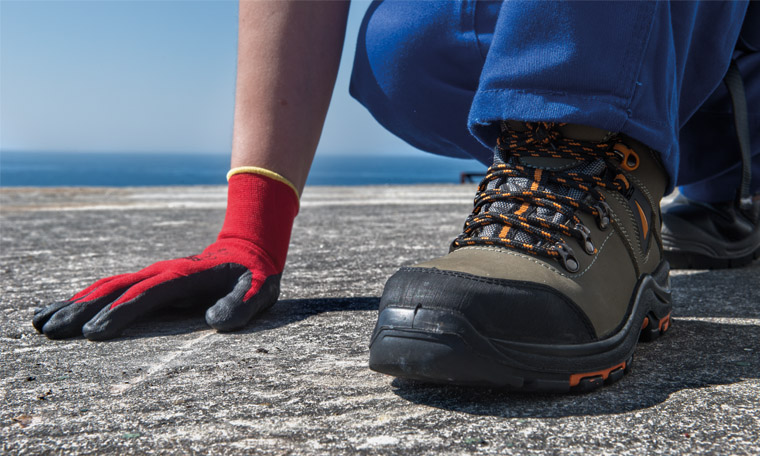The Work Shoes Market is estimated at USD 417.6 million in 2022 and is projected to reach USD 680.3 million by 2032, at a CAGR of ~5.00% from 2022 to 2032.
The work shoes are primarily used to prevent injuries to the foot while working. These shoes are designed specifically according to the hazards in industries and manufacturing plants. These shoes have metal mesh or special plates, that protect toes and metatarsal area of foot. The metal layers or plates in the shoes protect the toes and foot against hazards that might cause serious damage.
To keep injuries under control and maintain workers’ well-being, the government and companies are implementing safety measures and requiring the usage of safety equipment in the workplace. Workers are given specifically designed PPE kits, which include these work shoes. All of these safety precautions are required, and those who fail to do so face severe consequences.
Manufacturers are making the work shoes according to the hazards at the work places. Some shoes provide insulation form extreme heat or cold, some are waterproof and antiskid, keeping user stable in wet and slippery conditions. The manufacturing industries and constructions sites are the most hazardous places, where work related accidents are very common.
The biggest market constraint is the availability of low-cost and counterfeit work shoes. Local producers employ low-cost materials to make these shoes, which they sell at a lesser price than authentic items. Customers prefer cheaper items over originals, and there is a risk of user injury.
Supercharge Your Knowledge: Dive into the Booming Work Shoes Market with Our Sample Report! https://www.futuremarketinsights.com/reports/sample/rep-gb-16363
Key Takeaways from the Sneaker Market Study
- Among all the many shoe types, lace-up work shoes are the most popular. Lace-up shoes provide superior grip and comfort, as well as the best overall holding strength.
- PU soles are widely used for work shoes. These soles are used commonly as they provide great comfort and have better shock absorbing ability, and durability, ideal for work shoes.
- Men’s work shoes are in higher demand than women’s work shoes. The main reason being high number of men workers and labourers all around the world.
- In the case of regional analysis of regions like the Asia region is expected to gain traction in the work shoes market.
“Many manufacturing industries are mandating the safety outfits in the premises to keep workers from injuries. Governments are also making sure that the work shoes used are up to the standards.” Says an FMI Analyst.
Impact of COVID-19 on the Market
COVID-19 has an influence on all industries worldwide. Regulations to limit the virus had an influence on the footwear sector as well. Work shoes were severely damaged when demand from the primary markets abruptly decreased. Many producers have to retain product in inventory and manage sales by forecasting future customer behaviour. As the market did not recover quickly after the pandemic, the manufacturers had to face losses, along with changed consumer preferences further having a negative effect on market,
The manufacturing companies, construction departments, and government agencies are the primary consumers of work shoes. As buildings and businesses throughout the world came to a halt, so did demand for work shoes. Regulations in the sales and distribution sectors have a significant impact on the work shoe industry.
Who is winning?
Leading players operating in the sneaker market Honeywell International, Dunlop Boots, Bata Industrials, Rock Fall, ACME Fabrik Plastic Co., Bova Safety Footware, W.L. Gore, Gabri Safety Shoes, Wolverine, V.F. Corporation, Simon Corporation and among others.
Work Shoes Market by Category
By Application, Work Shoes Market is segmented as:
- Manufacturing
- Construction
- Mining
- Others
By Features, Work Shoes Market is segmented as:
- Slip Resistant
- Flexible
- Puncture Resistant
- Breathable
- Others
By Closure Type, Work Shoes Market is segmented as:
- Lace Up
- Buckle
- Hook and Loop
- Others
By Sole Material, Work Shoes Market is segmented as:
- Rubber
- Polyurethane
- EVA
- Others
By Outer Material, Work Shoes Market is segmented as:
- Genuine Leather
- Synthetic Material
- Canvas
- Mesh
- Others
By Sales Channel, Work Shoes Market is segmented as:
- Multi-brand Stores
- Independent Small Stores
- Online Retailers
- Other Sales Channel
By Region, Work Shoes Market is segmented as:
- North America
- Latin America
- Europe
- East Asia
- South Asia
- Oceania
- MEA
About Future Market Insights, Inc.
Future Market Insights, Inc. (ESOMAR certified, Stevie Award – recipient market research organization and a member of Greater New York Chamber of Commerce) provides in-depth insights into governing factors elevating the demand in the market. It discloses opportunities that will favor the market growth in various segments on the basis of Source, Application, Sales Channel and End Use over the next 10-years.
Contact Us:
Future Market Insights Inc.
Christiana Corporate, 200 Continental Drive,
Suite 401, Newark, Delaware – 19713, USA
T: +1-845-579-5705
LinkedIn| Twitter| Blogs | YouTube
For Sales Enquiries: sales@futuremarketinsights.com

